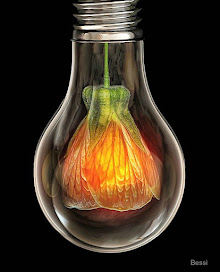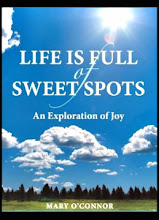 Fear is cold, metallic and salty. It’s the sound of stilted exhalations, the irrational shuffle of shoes moving this way and that, the mental retracing of every detail that has added up to a single moment that can’t be wished away or avoided. Fear is a collision with everything that negates life. According to researchers at SUNY Stonybrook, fear has a smell that comes from specific human pheromones. I may not be a scientist, but I’ve always subscribed to the notion that basic emotions emanate specific aromas. The frequency with which people “sense” things in other people is a good example of this. Though we are social creatures by nature our survival streak is fierce; we read everyone and everything in our environment so we can position ourselves for safety and pleasure, and have been doing so since our species began.
Fear is cold, metallic and salty. It’s the sound of stilted exhalations, the irrational shuffle of shoes moving this way and that, the mental retracing of every detail that has added up to a single moment that can’t be wished away or avoided. Fear is a collision with everything that negates life. According to researchers at SUNY Stonybrook, fear has a smell that comes from specific human pheromones. I may not be a scientist, but I’ve always subscribed to the notion that basic emotions emanate specific aromas. The frequency with which people “sense” things in other people is a good example of this. Though we are social creatures by nature our survival streak is fierce; we read everyone and everything in our environment so we can position ourselves for safety and pleasure, and have been doing so since our species began. I knew the smell of fear at the age of eight. I had a teacher that gave religious instruction who was also a Holocaust survivor. He was a sweet and gentle man, but extremely nervous. A number was tattooed on his forearm that matched the color of veins that showed through the weathered skin of his hands. The teacher was giving a lesson on the many names of G-d in the Old Testament and wanted to share one of these names with the class. He held his chalk to the blackboard and struggled with writing out the holy name because it is forbidden to spell or utter this name unless it is said in prayer. For two minutes he would touch the stick of chalk to the blackboard and then retract it. He muttered to himself and there were beads of sweat on his forehead. I felt sorry for him, but I was eight years old and his behavior was scaring me. I could smell a peculiar odor that came from his sweat, something that was always faintly present due to his nervous disposition. To my nose, this particular smell was a mixture of the sharp note in earwax and dirty sweat. It mingled with the scent of the simple wool jackets he always wore and defined him in memory.
I knew the smell of fear at the age of eight. I had a teacher that gave religious instruction who was also a Holocaust survivor. He was a sweet and gentle man, but extremely nervous. A number was tattooed on his forearm that matched the color of veins that showed through the weathered skin of his hands. The teacher was giving a lesson on the many names of G-d in the Old Testament and wanted to share one of these names with the class. He held his chalk to the blackboard and struggled with writing out the holy name because it is forbidden to spell or utter this name unless it is said in prayer. For two minutes he would touch the stick of chalk to the blackboard and then retract it. He muttered to himself and there were beads of sweat on his forehead. I felt sorry for him, but I was eight years old and his behavior was scaring me. I could smell a peculiar odor that came from his sweat, something that was always faintly present due to his nervous disposition. To my nose, this particular smell was a mixture of the sharp note in earwax and dirty sweat. It mingled with the scent of the simple wool jackets he always wore and defined him in memory. The next time I smelled that same odor was under different circumstances. A close friend had become addicted to heroin. She hit bottom and took the first step every recovering addict takes; she admitted she had a problem she could not control. She was extremely irritable and unbeknownst to me, had spent a week alone in her apartment going cold turkey. The detoxifying process marked her with a faint odor that I immediately recognized as fear; the same smell of fear I identified in my third grade teacher. There was a survival connection between these two olfactive experiences. My friend was literally fighting for her life, where my teacher was fighting for his existence as a pious man. The comparison of these two instances provided me with a different perspective regarding the smell of fear, and made me wonder what had become of my poor teacher. If he’s passed on, I hope he has found a good measure of peace and forgiveness as he was extremely hard on himself.
The next time I smelled that same odor was under different circumstances. A close friend had become addicted to heroin. She hit bottom and took the first step every recovering addict takes; she admitted she had a problem she could not control. She was extremely irritable and unbeknownst to me, had spent a week alone in her apartment going cold turkey. The detoxifying process marked her with a faint odor that I immediately recognized as fear; the same smell of fear I identified in my third grade teacher. There was a survival connection between these two olfactive experiences. My friend was literally fighting for her life, where my teacher was fighting for his existence as a pious man. The comparison of these two instances provided me with a different perspective regarding the smell of fear, and made me wonder what had become of my poor teacher. If he’s passed on, I hope he has found a good measure of peace and forgiveness as he was extremely hard on himself. For the past eight years Americans have lived in a culture of fear. Much of this has been foisted upon the world as a result of different societies and belief systems mingling and colliding. This raises all sorts of issues with regard to identity and truth, matters that reconcile slowly and in ways that aren't always predictable. Despite the challenges we face, each of us has an opportunity to transform the current climate of fear into one that embraces love and understanding. It requires that we retract our pointing fingers away from politicians and scapegoats, and start thinking about an antidote. Times are tough. If you know someone who is suffering because of the downturn in the economy, reach out. If you are struggling with something of a personal nature, don’t be afraid to ask for help. Things can change for the better and it helps to know that others experience the same things that you do. The perfume of compassion always rises above the smell of fear because its essence is pure and liberating. It is a free gift you can give to everyone, including yourself, this holiday season.
For the past eight years Americans have lived in a culture of fear. Much of this has been foisted upon the world as a result of different societies and belief systems mingling and colliding. This raises all sorts of issues with regard to identity and truth, matters that reconcile slowly and in ways that aren't always predictable. Despite the challenges we face, each of us has an opportunity to transform the current climate of fear into one that embraces love and understanding. It requires that we retract our pointing fingers away from politicians and scapegoats, and start thinking about an antidote. Times are tough. If you know someone who is suffering because of the downturn in the economy, reach out. If you are struggling with something of a personal nature, don’t be afraid to ask for help. Things can change for the better and it helps to know that others experience the same things that you do. The perfume of compassion always rises above the smell of fear because its essence is pure and liberating. It is a free gift you can give to everyone, including yourself, this holiday season.Notes:
Over the years scent artist Sissel Tolaas has worked with synthesized human sweat pheromones in her own explorations of the scent of fear. Her work has been featured at the MIT List Visual Arts Center in Cambridge, MA, and The Grand Arts in Kansas City, MO, among others.
The drawing of hands featured in this post comes from the book Shefa Tal, by Shabbetai Sheftel Horowitz. The author, who lived from 1561-1691, was a renowned physician from Prague. The illustration of hands is filled with Kabalistic symbols. According to the Jewish Virtual Library, “These hands are divided into twenty-eight sections, each containing a Hebrew letter. Twenty-eight, in Hebrew numbers, spells the word Koach = strength. At the bottom of the hand, the two letters on each hand combine to form YHWH [יהוה], the name of God." The book was published in 1612.
Painting of "White Bird" by Krista Lynn Brown on Devaluna.





